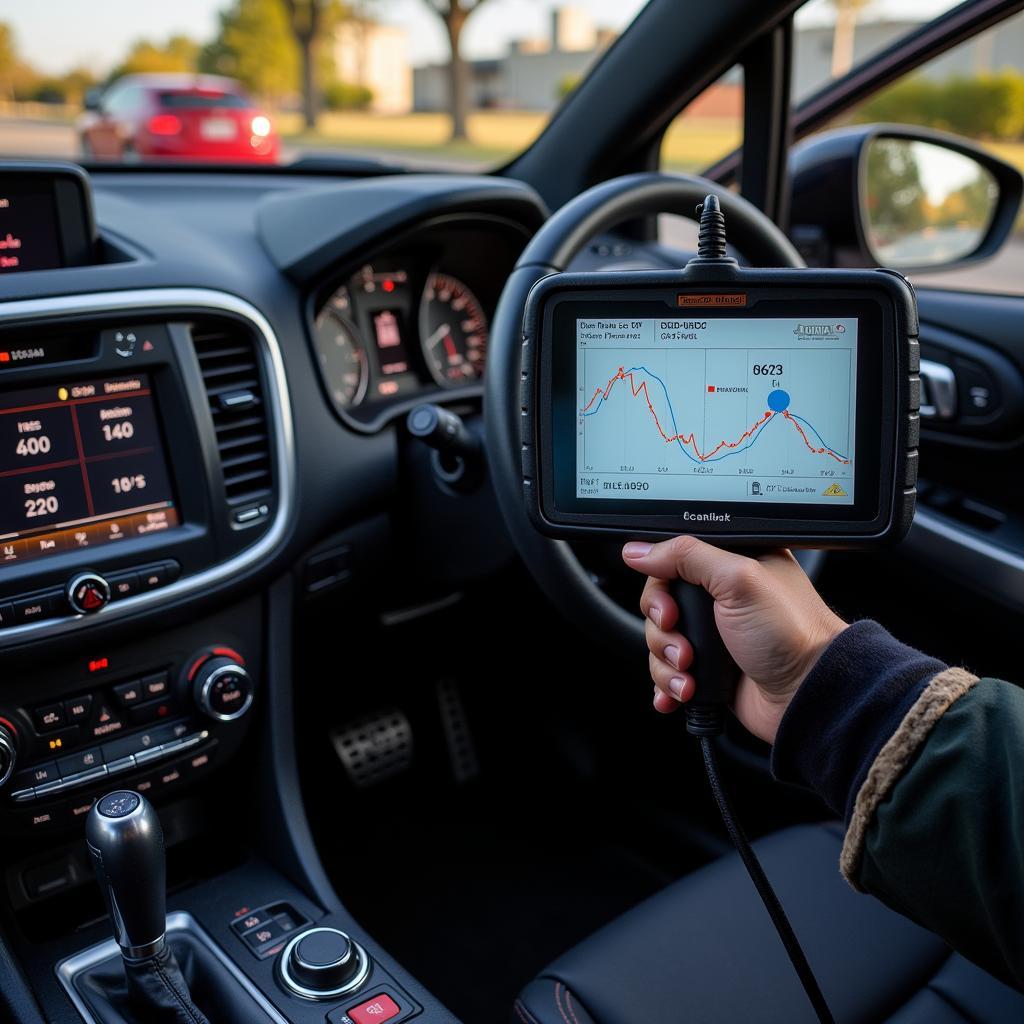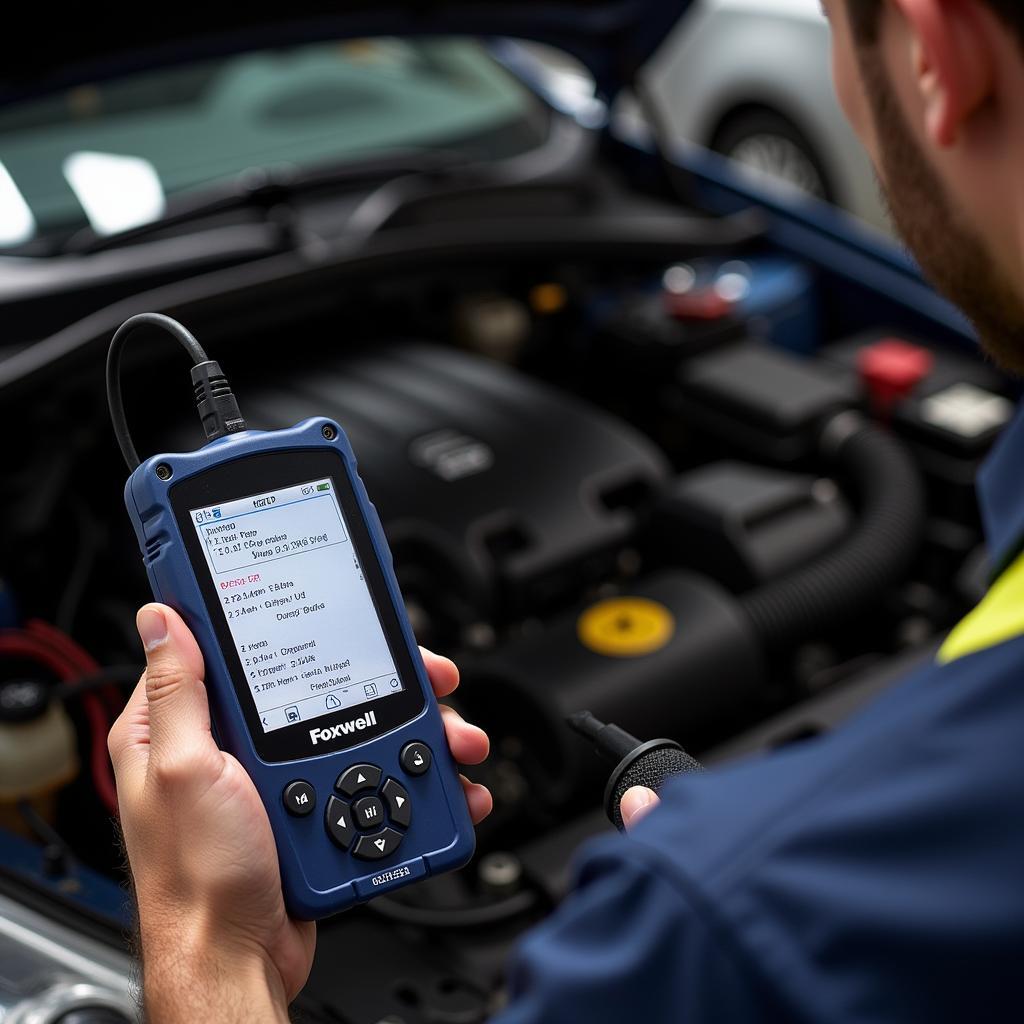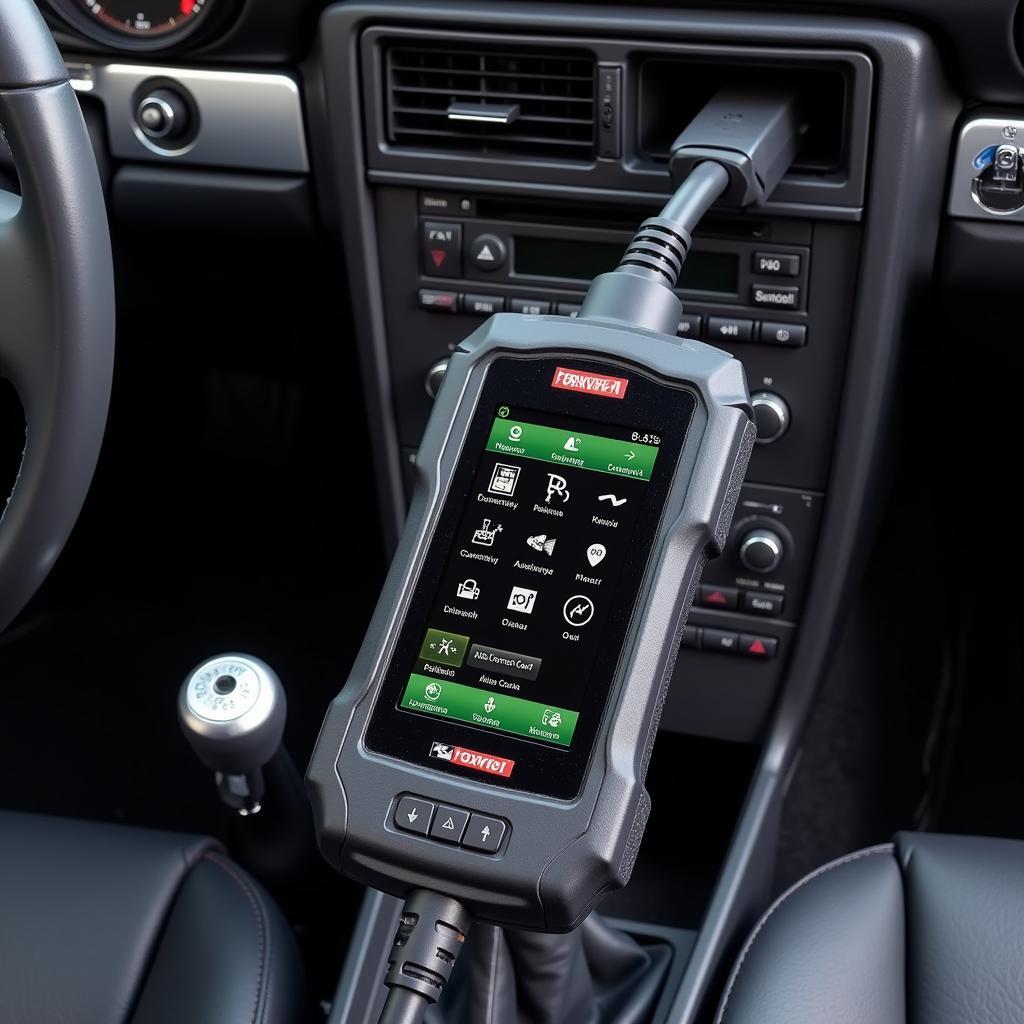The Foxwell NT301 has become a mainstay in many automotive workshops and garages. But its true strength lies not just in reading and clearing error codes but in its powerful live data capabilities. This guide delves into the world of “Foxwell Nt301 Live Data”, showing you how to leverage this tool to diagnose and troubleshoot automotive issues effectively.
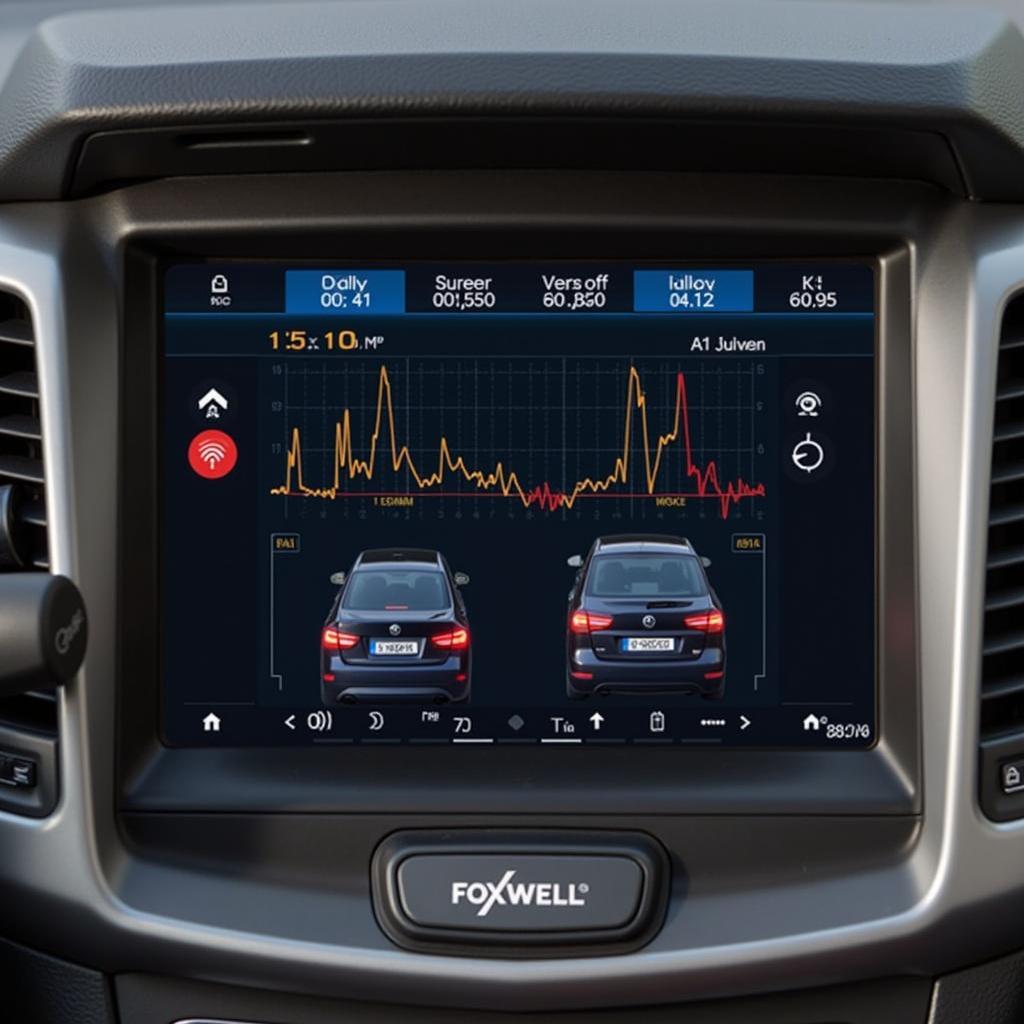 Foxwell NT301 Live Data Display
Foxwell NT301 Live Data Display
Understanding Live Data and Its Importance
Live data, in essence, is real-time information from your vehicle’s various sensors. This data stream provides a snapshot of your engine’s health, transmission performance, and various other system operations. Unlike static diagnostic trouble codes (DTCs), which only indicate that a problem exists, live data offers a dynamic view of what’s happening in your car right now.
Why is this important? Here’s why:
- Precise Diagnosis: Live data helps pinpoint the root cause of an issue instead of just addressing symptoms. For instance, a DTC might point to a lean fuel mixture, but live data can reveal if the cause is a faulty oxygen sensor, a vacuum leak, or a failing fuel pump.
- Proactive Maintenance: By monitoring live data parameters like engine temperature, battery voltage, and fuel trim, you can identify potential problems before they escalate into costly repairs.
- Enhanced Understanding: Regularly viewing live data familiarizes you with your vehicle’s normal operating ranges. This knowledge allows you to quickly detect anomalies and address them proactively.
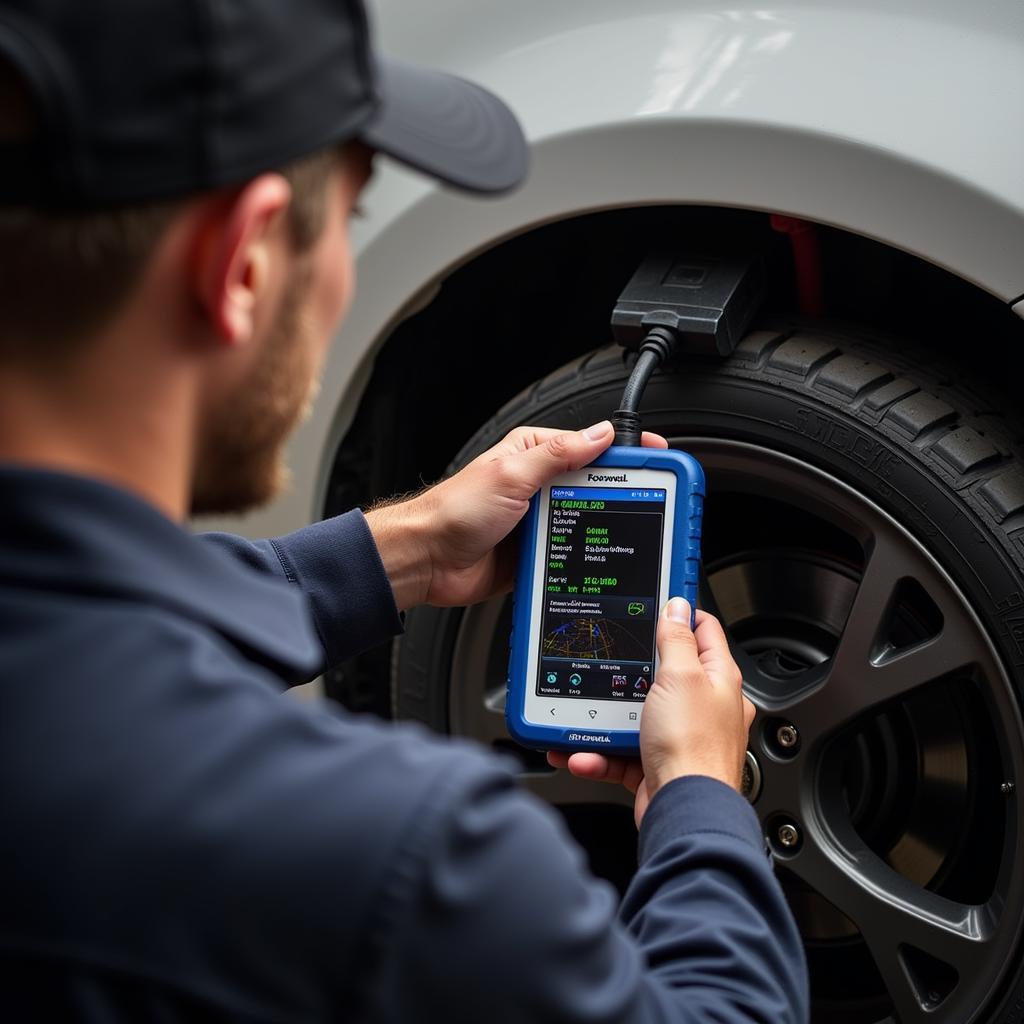 Mechanic Using Foxwell NT301 for Diagnostics
Mechanic Using Foxwell NT301 for Diagnostics
Harnessing the Foxwell NT301 for Live Data Analysis
The Foxwell NT301 offers a user-friendly interface for accessing and interpreting live data. Here’s a step-by-step guide:
- Connect and Power Up: Plug the NT301 into your vehicle’s OBD-II port (usually located under the dashboard, driver’s side). Turn on the ignition, ensuring the engine is off.
- Navigate to Live Data: Power on the Foxwell NT301. From the main menu, select your vehicle’s make, model, and year. Choose “Live Data” from the diagnostic menu options.
- Select Parameters: You’ll be presented with a list of parameters you can view. The options depend on your vehicle’s make and model. Some common parameters include:
- Engine RPM
- Coolant Temperature
- Oxygen Sensor Readings
- Short and Long Term Fuel Trim
- Vehicle Speed
- Throttle Position
- Interpret the Data: The Foxwell NT301 will display the selected parameters in real time. You can choose to view them in various formats such as graphs, gauges, or numerical values.
- Record and Analyze: The NT301 allows you to record live data streams for later review. This feature is invaluable for identifying intermittent problems or comparing data before and after a repair.
Common Live Data Applications
Let’s look at some practical ways the Foxwell NT301’s live data feature can assist in accurate diagnosis:
1. Misfire Detection and Diagnosis:
- Symptoms: Engine shaking, rough idling, loss of power, illuminated check engine light.
- Relevant Live Data:
- Engine RPM: Inconsistent readings or sudden drops can indicate misfires.
- Misfire Count: Some vehicles display misfire counts for each cylinder.
- How it Helps: By monitoring these parameters while the engine is running, you can identify which cylinder is misfiring and investigate potential causes like spark plugs, ignition coils, or fuel injectors.
2. Oxygen Sensor Functionality:
- Symptoms: Poor fuel economy, increased emissions, sluggish performance, illuminated check engine light.
- Relevant Live Data:
- Oxygen Sensor Voltage: Fluctuations within a specific range indicate a functioning sensor.
- How it Helps: Live data helps determine if the oxygen sensor is responding correctly to changes in exhaust gas oxygen content. A sluggish or unchanging reading suggests a faulty sensor.
3. EVAP System Leaks:
- Symptoms: Fuel smell, difficulty starting, hissing sound from the engine bay, illuminated check engine light.
- Relevant Live Data:
- EVAP System Pressure: Monitors pressure changes in the system to detect leaks.
- Purge Valve Duty Cycle: Indicates if the purge valve is opening and closing correctly.
- How it Helps: By observing changes in EVAP system pressure and purge valve activity, you can pinpoint leaks and diagnose faulty components.
Maximizing Your Foxwell NT301 Experience
Here are some additional tips to get the most out of your Foxwell NT301:
- Consult Manufacturer Specifications: Always refer to your vehicle’s service manual for specific data parameter ranges and acceptable deviations.
- Utilize Online Resources: The Foxwell NT301 forum is an excellent platform for sharing experiences, troubleshooting tips, and seeking advice from other users.
- Keep Your Device Updated: Regular software updates ensure compatibility with the latest vehicle models and often include new features and bug fixes. You can find the Foxwell NT 301 manual and update instructions online.
- Explore Advanced Features: The Foxwell NT301 offers capabilities beyond basic live data viewing, including component activation, adaptations, and reset functions. Take the time to explore these features for a more comprehensive diagnostic experience.
 Mechanic Reviewing Foxwell NT301 Data
Mechanic Reviewing Foxwell NT301 Data
Conclusion: Embrace Data-Driven Diagnostics
The Foxwell NT301, with its user-friendly design and powerful live data capabilities, empowers both DIY enthusiasts and professional mechanics to diagnose and repair automotive issues with increased accuracy and efficiency. By understanding how to interpret live data, you gain invaluable insights into your vehicle’s inner workings, ultimately saving you time and money in the long run.
For expert advice and assistance with your automotive diagnostic needs, don’t hesitate to reach out to the team at ScanToolUS. Contact us at +1 (641) 206-8880 or visit our office at 1615 S Laramie Ave, Cicero, IL 60804, USA.

